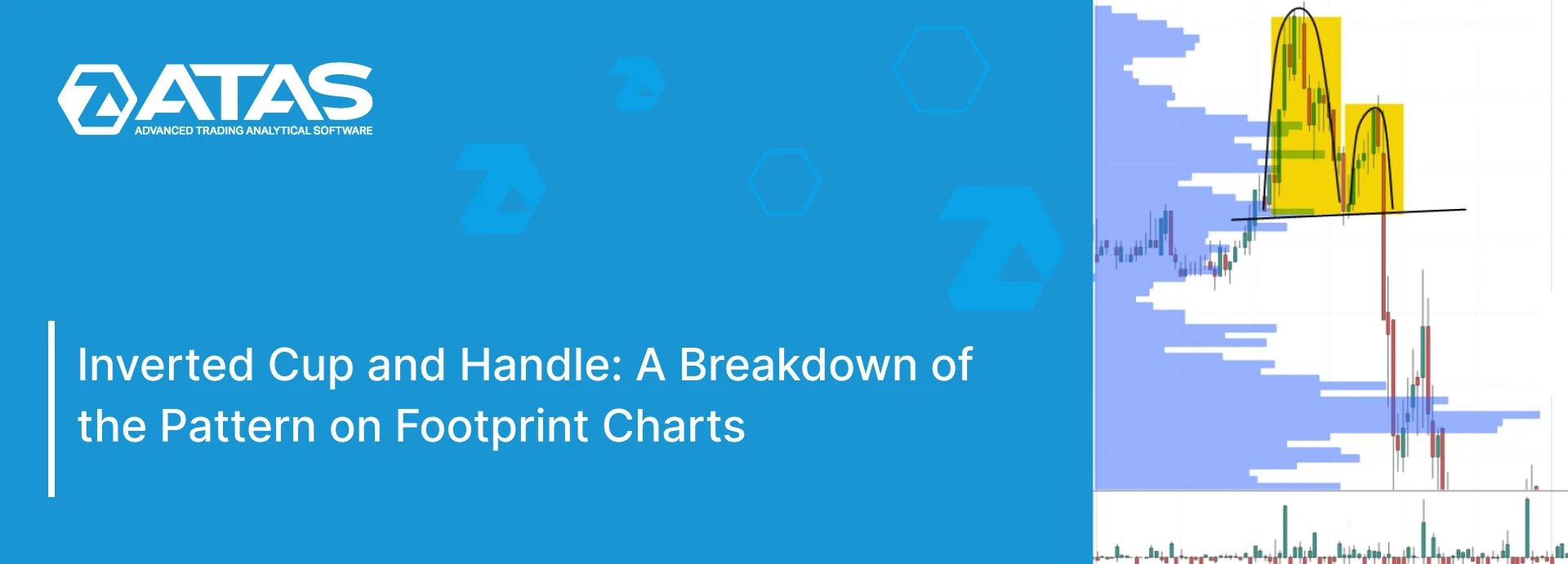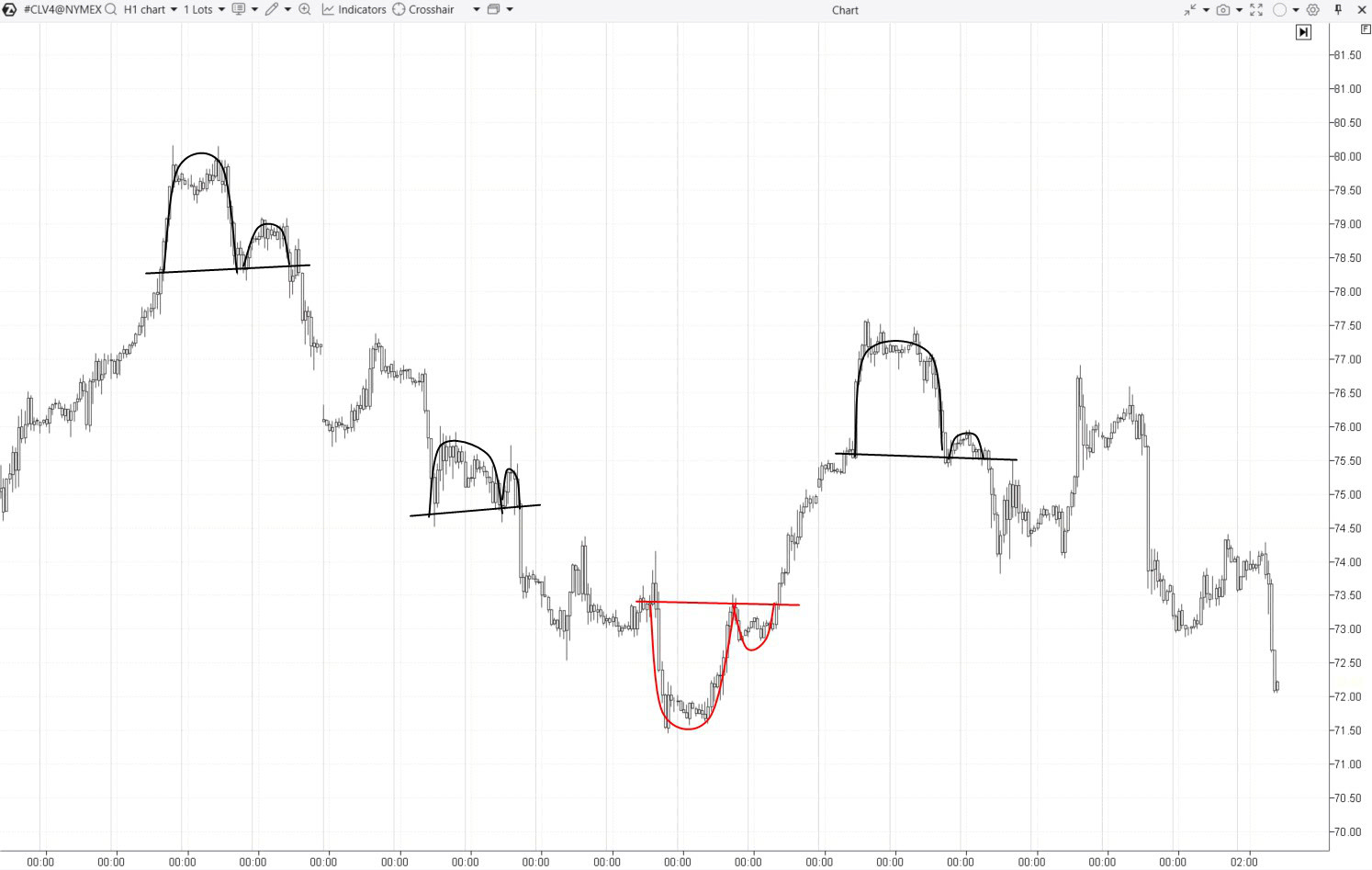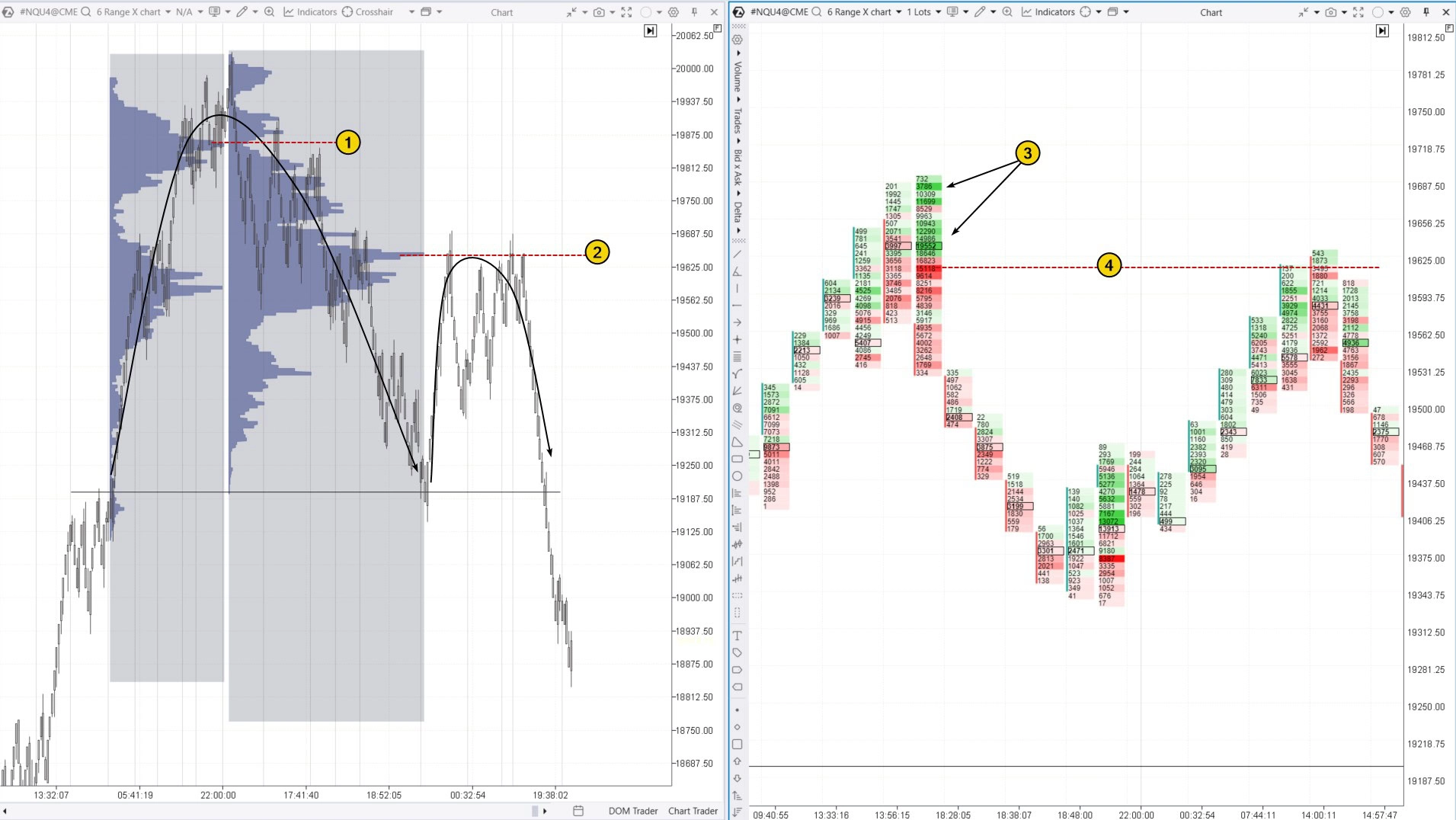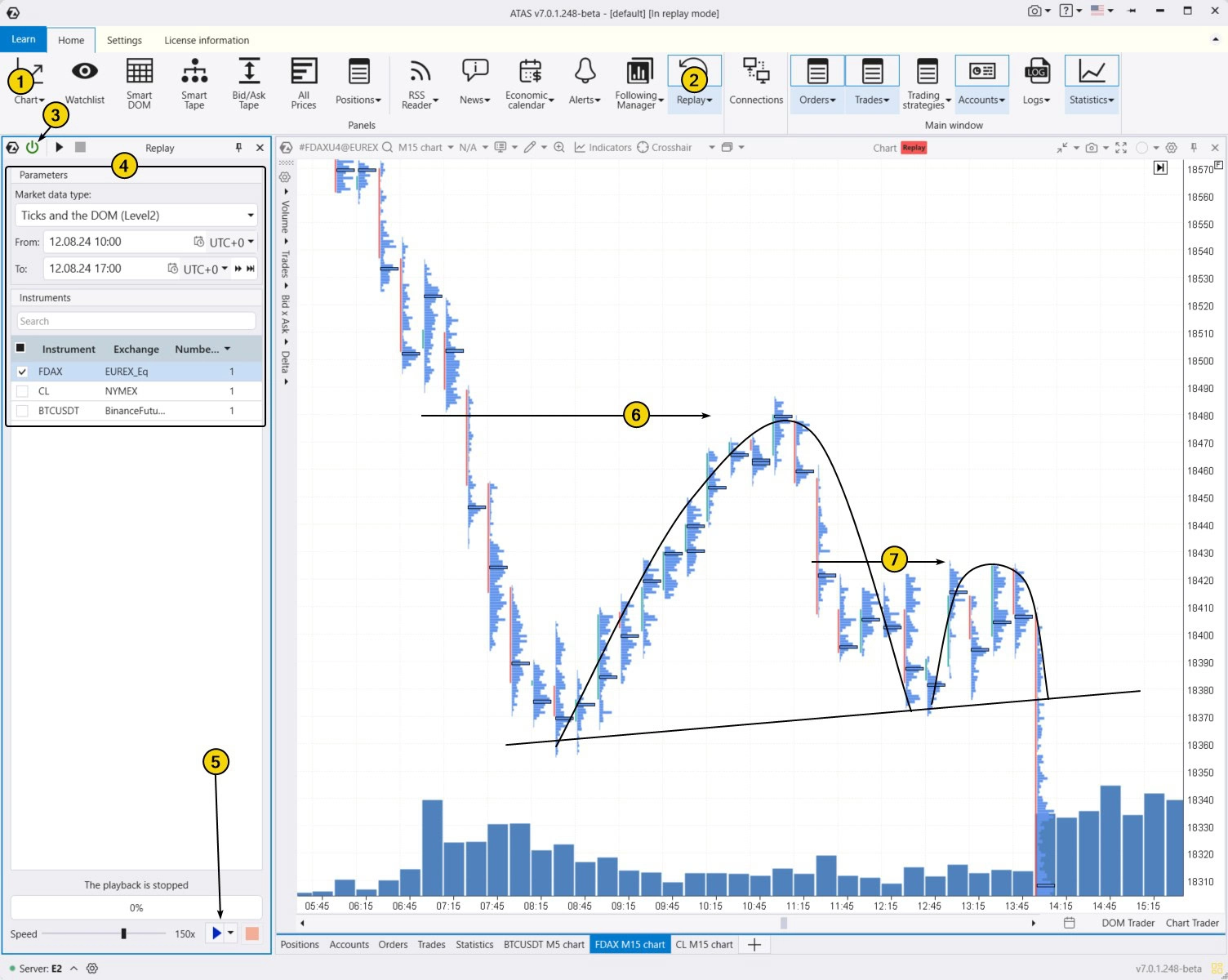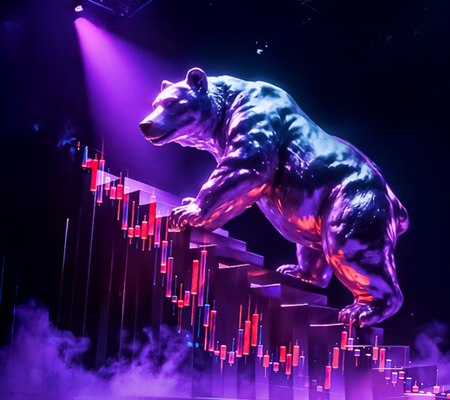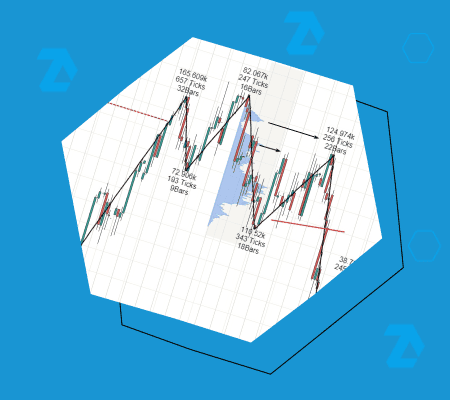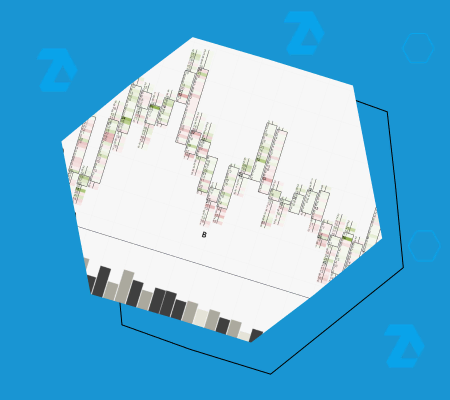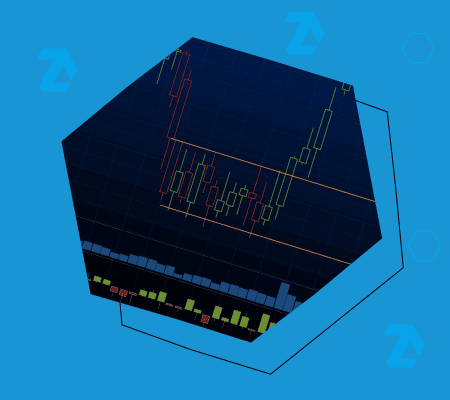The trajectory forming the inverted cup over the first two days is marked as (1), and the “handle” formed on the third day is marked as (2).
Clusters reveal the unfolding story, starting at point (3), where large market buys are visible (indicated by the bright green cluster).
The price then moved upward, possibly driven by the news.
Number (4) indicates bright green clusters, signaling a buying climax. In simple terms, late buyers were trying to “jump on the bandwagon,” expecting further price increases, but instead, the price entered a range, fluctuating around the $79.60 level (as shown in the profile). Why did not the price rise after such significant buying activity, indicated by the green clusters? Professional traders probably used the late buyers’ market orders to lock in profits on their long positions or to open new short positions.
The next day, market sentiment shifted. The price increase up until 10:00 drew buyers into a bull trap, while the bright red clusters (5) near the $79.20 marked strong selling activity. This led to real progress — a breakout of the previous local low and a further drop in price. This decline reached its climax at the end of the day (as shown by the bright red cluster on the 18:00 candle) near the high-volume level from the previous day (6).
On the third day (during the European session), there was a minor upward correction after the strong downward impulse seen in the middle of the chart. From a buyer and seller analysis perspective, demand weakened as the price rose to the level (marked with red dashes) where a clear seller dominance was observed. This formed the “handle” peak, after which the downward trend resumed during the U.S. session.

